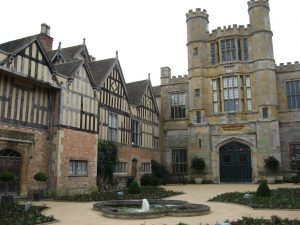Building survey and laser scanning of the Coughton Court gave more insight into a priest hiding hole that was first discovered in the 1850s. The building served a key role in the Gunpowder Plot of 1605 – a failed assassination attempt against James I of England and VI of Scotland by provincial English Catholics.

Coughton Court has been the home of the Throckmortons, one of England’s oldest Catholic families, since the 15th Century, but is now in the care of the National Trust. The hidden room in a turret of the main gatehouse is concealed between the floor levels. It still had a rope ladder, some bedding and a portable altar. Scanning technology has allowed a research team from the University of Nottingham to make a 3D scan of the double-level space with the aim of digitally reproducing its location in a digital model.

The model visualises more clearly how the priest-hole has been hidden within the structure, and allows visitors to explore this hidden space even if they cannot physically access it. Many wealthy Catholics cleverly redesigned their country homes to include secret spaces known as “priest holes” after English Reformation when Catholics were forced to make difficult choices between their loyalty to the Crown and to their faith.
(after Stratford-upon-Avon Herald & University of Nottingham)